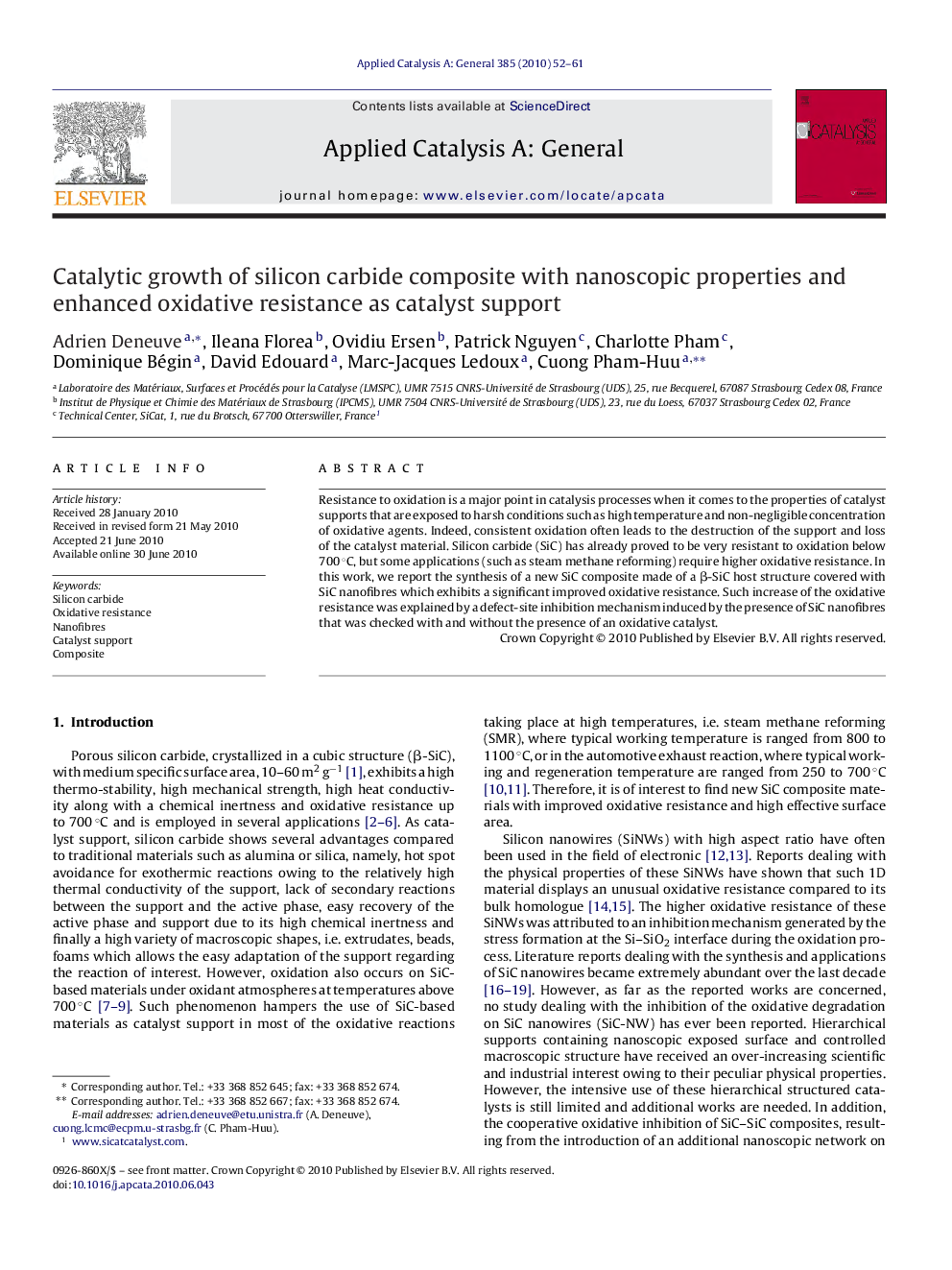| Article ID | Journal | Published Year | Pages | File Type |
|---|---|---|---|---|
| 41967 | Applied Catalysis A: General | 2010 | 10 Pages |
Resistance to oxidation is a major point in catalysis processes when it comes to the properties of catalyst supports that are exposed to harsh conditions such as high temperature and non-negligible concentration of oxidative agents. Indeed, consistent oxidation often leads to the destruction of the support and loss of the catalyst material. Silicon carbide (SiC) has already proved to be very resistant to oxidation below 700 °C, but some applications (such as steam methane reforming) require higher oxidative resistance. In this work, we report the synthesis of a new SiC composite made of a β-SiC host structure covered with SiC nanofibres which exhibits a significant improved oxidative resistance. Such increase of the oxidative resistance was explained by a defect-site inhibition mechanism induced by the presence of SiC nanofibres that was checked with and without the presence of an oxidative catalyst.
Graphical abstractFigure optionsDownload full-size imageDownload high-quality image (105 K)Download as PowerPoint slideResearch highlights▶ SiC nanofibres with homogeneous diameter exhibit strong anchorage on the SiC host. ▶ The SiC–NF/SiC composite shows a higher oxidative resistance than that of pristine SiC. ▶ The curvature of the cylindrical SiC nanofibres prevents them from further oxidation. ▶ The self-oxidation inhibition of the SiC host also explains the composite resistance. ▶ Results suggest potential in steam reforming and automotive exhaust gas treatment.
